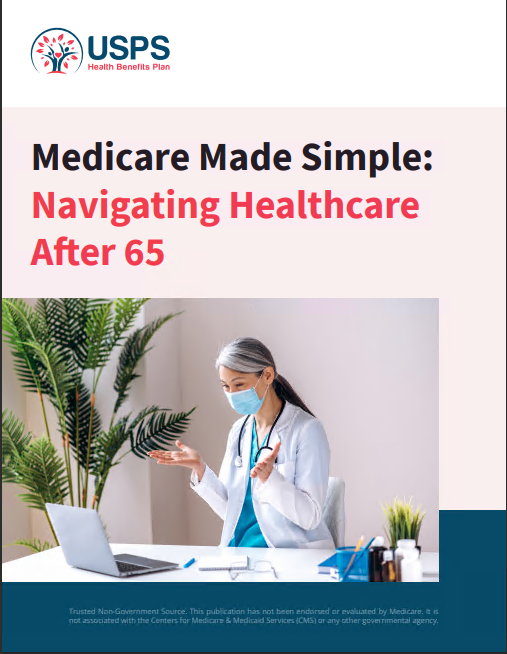Key Takeaways
-
When your Postal Service Health Benefits (PSHB) plan works alongside Medicare Part D in 2025, your prescription coverage changes significantly, particularly if you’re Medicare-eligible.
-
You might not be paying what you think you are. Hidden costs like delayed copay accumulations, out-of-network pricing, and overlapping deductibles can still apply, depending on how your coverage is integrated.
How PSHB and Medicare Part D Coordinate in 2025
In 2025, PSHB plans are replacing FEHB plans for Postal Service employees and retirees. One major update is how prescription drug benefits are now coordinated with Medicare Part D for those eligible. If you’re retired and enrolled in Medicare Part A and B, you are automatically placed into a Part D Employer Group Waiver Plan (EGWP) through your PSHB provider.
This integration is designed to offer more comprehensive prescription coverage without requiring a separate standalone Part D plan. But it also means understanding how the costs and coverage layers work between the two systems.
What Your PSHB Plan Covers on Its Own
If you are not yet enrolled in Medicare, your PSHB plan acts as your standalone health coverage, including prescriptions. Typically, you get:
-
A pharmacy network with copayments based on drug tiers
-
Annual deductibles (vary by plan)
-
Coinsurance for certain brand or specialty drugs
-
Prior authorization and quantity limits for high-cost prescriptions
These features still exist in 2025, but they interact differently once Medicare eligibility is part of the equation.
Medicare Part D’s Role After You Enroll
Once you enroll in Medicare Part B, your PSHB plan links you to its Part D EGWP. This isn’t optional unless you formally opt out, which removes you from PSHB drug coverage altogether.
The EGWP includes:
-
Access to a large national pharmacy network
-
A $2,000 annual out-of-pocket cap for covered prescription drugs
-
Standard Medicare Part D drug tiers and formulary rules
-
Cost-sharing coordination between PSHB and Medicare Part D phases
This combination intends to reduce your out-of-pocket costs and improve access. But many retirees find it confusing to track exactly what they’re paying for and when.
The 2025 Medicare Part D Coverage Phases
Medicare Part D now operates with three phases:
-
Deductible Phase: You pay 100% of drug costs up to the deductible (maximum $590 in 2025).
-
Initial Coverage Phase: Your plan covers most costs, with you paying a share depending on the drug tier.
-
Catastrophic Phase: Once your out-of-pocket drug spending hits $2,000, your plan pays 100% for the rest of the year.
When you’re in a PSHB plan with Part D integration, the plan often covers most or all of the deductible, depending on the design. But if you opt out or don’t have Medicare Part B, you miss this benefit.
How Costs Are Shared
You still face:
-
Monthly premiums (your annuitant share)
-
Copayments for most prescriptions
-
Potential coinsurance for specialty drugs
-
A Part B premium (since it’s required to stay enrolled in the PSHB prescription plan)
The good news: once you hit the $2,000 out-of-pocket cap, Medicare Part D kicks in fully. You’ll pay nothing for covered drugs beyond that point in 2025.
What Happens If You Opt Out of Part D EGWP
Choosing not to participate in the PSHB drug plan linked to Medicare Part D has big consequences. If you opt out:
-
You lose your PSHB prescription drug coverage entirely.
-
You may not be able to re-enroll unless you qualify for a future Special Enrollment Period.
-
You’re responsible for getting a standalone Part D plan on your own if you want drug coverage.
Opting out is permanent for most. And since the EGWP coverage includes expanded pharmacy access and a hard $2,000 out-of-pocket ceiling, opting out usually means higher long-term drug costs.
Coordination of Benefits Can Still Be Confusing
Even though PSHB and Medicare work together more smoothly in 2025, you might still run into situations where:
-
A pharmacy charges you the wrong copayment because of claim processing delays.
-
You hit your deductible sooner than expected because costs accumulate across both systems.
-
You need to get prior authorizations from both Medicare and your PSHB plan for certain medications.
Knowing where to call—and keeping all your ID cards up to date—is more important than ever.
Are You Really Paying Less?
The 2025 integration is supposed to reduce overall drug costs, and for many people it does. But it depends on how often you use medications and what types you need. Consider these variables:
-
Low usage: If you rarely take prescriptions, you may not hit the $2,000 cap. You still pay premiums, and some drugs may not be fully covered until you meet your deductible.
-
High usage: If you take multiple or expensive prescriptions, you could reach the cap quickly, meaning more savings over the year.
-
Generic vs. brand: Tier placement matters. Some generics might be $10–$20, while certain brand-name drugs could have much higher coinsurance.
Understanding this helps you decide if staying in the plan makes sense for your budget.
2025 PSHB Out-of-Pocket Prescription Cap: A Game Changer
For the first time, Medicare Part D puts a hard ceiling on what you pay out of pocket: $2,000 per calendar year. This change is major for high-volume prescription users.
Before 2025, once you reached the catastrophic coverage phase, you still paid 5% of the drug cost. Now, that’s gone. Once you cross the $2,000 threshold, you pay nothing more for the rest of the year on covered prescriptions.
This benefit applies only if you’re enrolled in Medicare Part D—either directly or through your PSHB plan’s EGWP. It does not apply if you’ve opted out.
Know When You’re Exempt From Medicare Part B (and Part D Integration)
Some people are exempt from the Medicare Part B requirement. If you:
-
Retired on or before January 1, 2025
-
Are an active employee aged 64 or older as of January 1, 2025
-
Live abroad full-time
-
Get healthcare through the VA or Indian Health Service
…you may not be required to enroll in Medicare Part B, and by extension, Part D.
In that case, your PSHB plan will still include prescription drug coverage, but without the Medicare integration or $2,000 out-of-pocket protection.
Enrollment Windows That Matter
Enrollment into the Medicare-linked prescription drug benefit isn’t automatic for everyone. Pay attention to these windows:
-
Initial Enrollment Period (IEP): 7 months around your 65th birthday (3 months before, the month of, and 3 months after)
-
General Enrollment Period (GEP): January 1 – March 31 each year
-
Open Season: November–December annually for PSHB plan changes
-
Special Enrollment Period (SEP): Triggered by life events (e.g., loss of coverage, moving)
Failing to act within these timelines could leave you without coverage or delay your eligibility for benefits.
Watch for the Annual Notice of Change (ANOC)
Each year, your PSHB plan sends an ANOC letter. This includes changes to:
-
Formulary drug lists
-
Pharmacy networks
-
Tier placements for medications
-
Premium and deductible amounts
Read this document carefully. It helps you compare what you paid in 2024 with what’s changing in 2025.
Clarifying the Bigger Picture
At its core, the PSHB–Medicare Part D partnership is built to streamline benefits, cut down costs, and help Postal retirees like you avoid high out-of-pocket burdens. But it’s only effective when you understand your responsibilities, especially around enrollment, plan coordination, and cost-sharing.
Staying in your PSHB plan with Part B and D eligibility gives you broader pharmacy access, capped expenses, and less worry. But opting out or missing enrollment windows can leave you with big bills.
Make Sure You’re Covered the Right Way
Understanding how PSHB and Medicare Part D team up in 2025 is critical if you want to protect your wallet and your access to needed medications. Knowing what you’re really paying for—between premiums, deductibles, and co-pays—puts you in a stronger position to make smart decisions about your healthcare.
If you’re unsure about how these benefits apply to your specific situation, get in touch with a licensed agent listed on this website for professional advice and clarity tailored to your retirement status.










